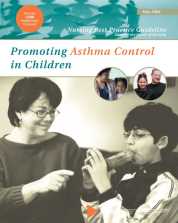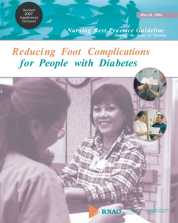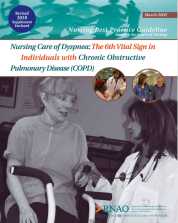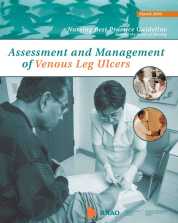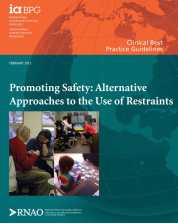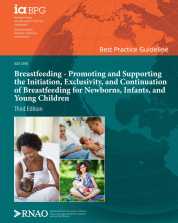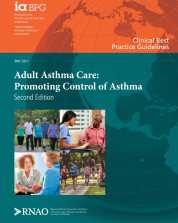The guideline contains recommendations for registered nurses and registered practical nurses on best nursing practices in the area of paediatric asthma. It is intended for nurses who may not be experts in asthma care and who work in a variety of practice settings across the continuum of care.
The purpose of this best practice guideline (BPG) is to support nurses as they help people with diabetes reduce their risk of foot complications.
The purpose of this best practice guideline (BPG) is to address the nursing assessment and management of stable, unstable and acute dyspnea associated with COPD.
The purpose of this best practice guideline (BPG) is to:
• improve outcomes for venous leg ulcer clients,
• assist practitioners to apply the best available research evidence to clinical decisions, and
• promote the responsible use of healthcare resources.
The purpose of this best practice guideline (BPG) is to provide evidence-based recommendations for registered nurses (RNs) and registered practical nurses (RPNs) related to the care of individuals who are at risk for behaviours that may result in harm to self/others and lead to the possible use of restraints (physical, chemical, environmental). Unless otherwise indicated in the guideline, the discussion focus is on physical restraint.
The purpose of this best practice guideline (BPG) is to enhance the capacity of nurses, the interprofessional team, peers, policy-makers, and employers to meet the needs of breastfeeding persons, their healthy term newborns, infants, and young children, and their partners, family, and support network.
The purpose of this best practice guideline (BPG) is to provide nurses and other health-care providers with evidence-based recommendations of foundational asthma care for adults with a diagnosis of asthma.
The purpose of this best practice guideline (BPG) is to provide nurses (nurse practitioners, registered nurses, registered practical nurses and nursing students) and other members of the interprofessional team with evidence-based recommendations and resources related to the insertion, assessment and maintenance of vascular access devices (VADs) in the infant (0–1 year), pediatric (1–18 years) and adult populations (18 years and older).
The purpose of this best practice guideline (BPG) is to provide nurses and the interprofessional team with evidence-based recommendations for the most effective strategies to support adults (18 years and older) who anticipate or live with an ostomy that will:
(a) promote self-management,
(b) enhance access and delivery of care, and
(c) lead to positive health outcomes.
The purpose of this best practice guideline (BPG) is to provide nurses, the interprofessional team and caregivers with evidence-based recommendations for the provision of oral care for adults (18 years of age and older) that will:
• promote an interprofessional approach to providing oral care,
• enhance the delivery of oral care interventions, and
• ultimately lead to positive oral health outcomes for persons.
